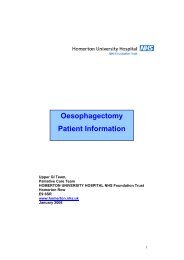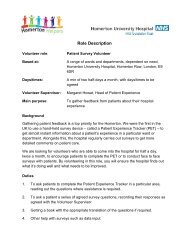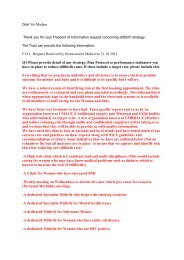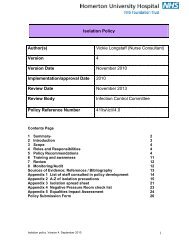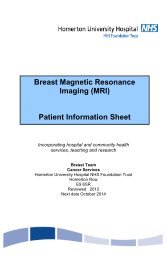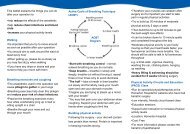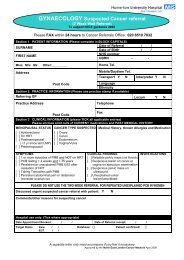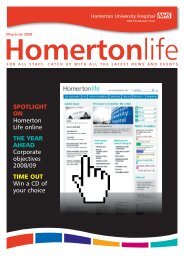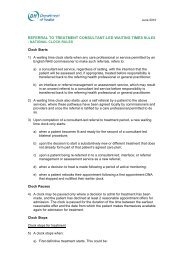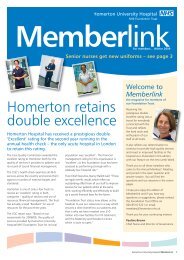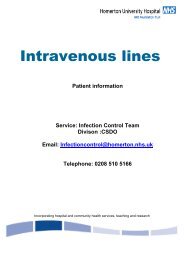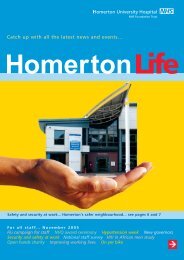Incident reporting policy - Homerton University Hospital
Incident reporting policy - Homerton University Hospital
Incident reporting policy - Homerton University Hospital
Create successful ePaper yourself
Turn your PDF publications into a flip-book with our unique Google optimized e-Paper software.
probably has suffered) a serious injury, major permanent harm or unexpected death 3 in hospital,other health service premises or other premises where NHS care is provided”and/orAn accident or incident that is in itself sufficiently serious and could in normal circumstances leadto death, serious injury or major permanent harm even if in the case considered it did not.and/orAccidents or incidents (or series of them that accumulate or build up to form a more seriousproblem) which are likely to cause significant concern to staff or the public or may producesignificant legal or media interest.The process for the management of these events is covered by Serious Untoward <strong>Incident</strong> (SUI) Procedure at22.0 below.7.0. <strong>Incident</strong> Reporting Process7.1 This process guide identifies the action that should be taken in the event of an incident. This is designedto ensure that adverse incidents are dealt with promptly and effectively so that the risk of harm to staff,patients and visitors is minimised and appropriate follow-up action is taken. It is recognised that the verynature of adverse incidents will call for a degree of flexibility and initiative by the individuals involved whichcannot be defined in this procedure.7.2 This procedure should be implemented by the senior member of staff on duty in an area when an adverseincident or near miss occurs.7.3 Action to be taken on discovery of an incident or near missThe most senior member of staff on duty is responsible for ensuring, as appropriate.• The immediate safety and care of the people involved• That the area has been made as safe as possible. Staff should only act within their capabilities andshould not jeopardise their own or others safety.• That a senior manager has been informed• That the scene is preserved; the area or equipment involved is isolated and that there is nounauthorised entry to the area or tampering with the equipment if applicable.• The area or equipment is not re-used until authorised by a senior manager.• That, where possible, statements have been taken from witnesses. If this is not possible at the time,then the names and contact details of all witnesses should be recorded so that statements can beobtained later.• That an incident report form is completed electronically on Datix in accordance with these guidelines.7.4 In the event of a serious untoward incident, as defined above, the Trust‟s Serious Untoward Proceduremust be followed at 22.0.8.0 Reporting Adverse <strong>Incident</strong>s8.1 Adverse events and near misses must be reported as soon as reasonably possible, using the Trusts onlineDatix system which can be accessed via the Trust intranet homepage. This process should be used toreport any incident that takes place on Trust property and to Trust staff at locations outside of the Truste.g. in a patient‟s home. On-line <strong>reporting</strong> can also be used for any incidents that involve the businessactivities of the Trust in any shape or form.8.2 Completion of the form provides:Formal documentation of all incidentsManagers with the opportunity to investigate and implement remedial action wherever necessary.8.3 The following points should also be noted:3 An event which has resulted in an unanticipated death or harm not related to the natural cause of the patient illness/underlyingcondition/pregnancy/childbirth. To be declared as SUI an incident, as well as the actual harm, must have occurred. A causal link betweenincident and outcome does not need to be demonstrated (e.g. by post-mortem) but must be plausible or suspected.Page 7 of 47



